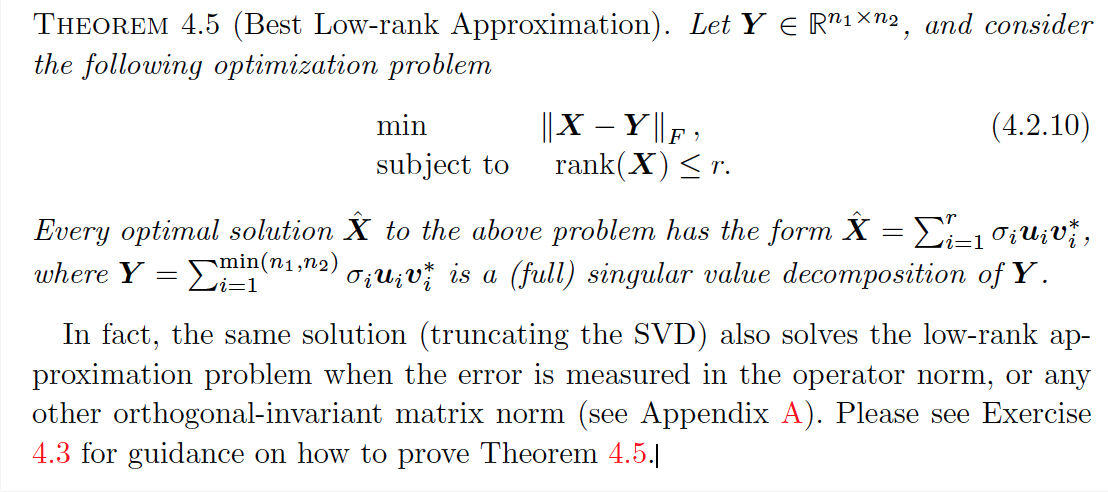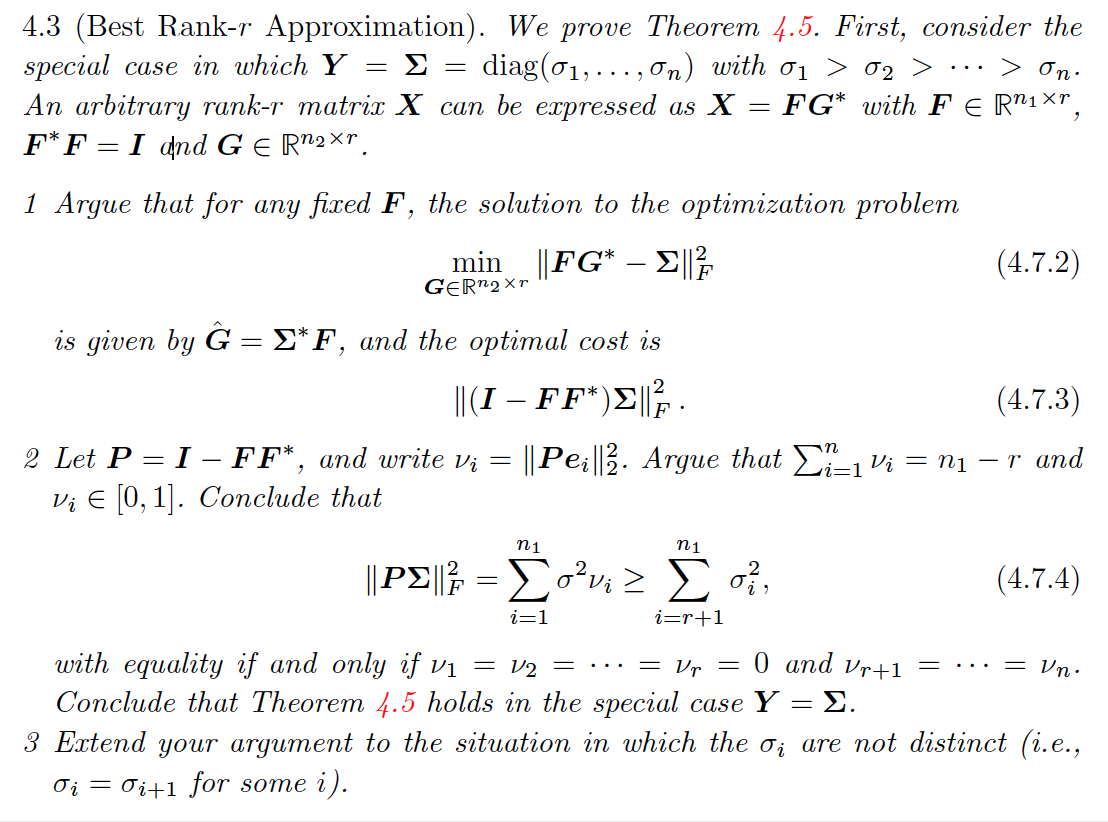Answered step by step
Verified Expert Solution
Question
1 Approved Answer
THEOREM 4.5 (Best Low-rank Approximation). Let Y ERixn2, and consider the following optimization problem min ||X - Y||F, (4.2.10) subject to rank(X) On: 4.3 (Best



Step by Step Solution
There are 3 Steps involved in it
Step: 1

Get Instant Access to Expert-Tailored Solutions
See step-by-step solutions with expert insights and AI powered tools for academic success
Step: 2

Step: 3

Ace Your Homework with AI
Get the answers you need in no time with our AI-driven, step-by-step assistance
Get Started


